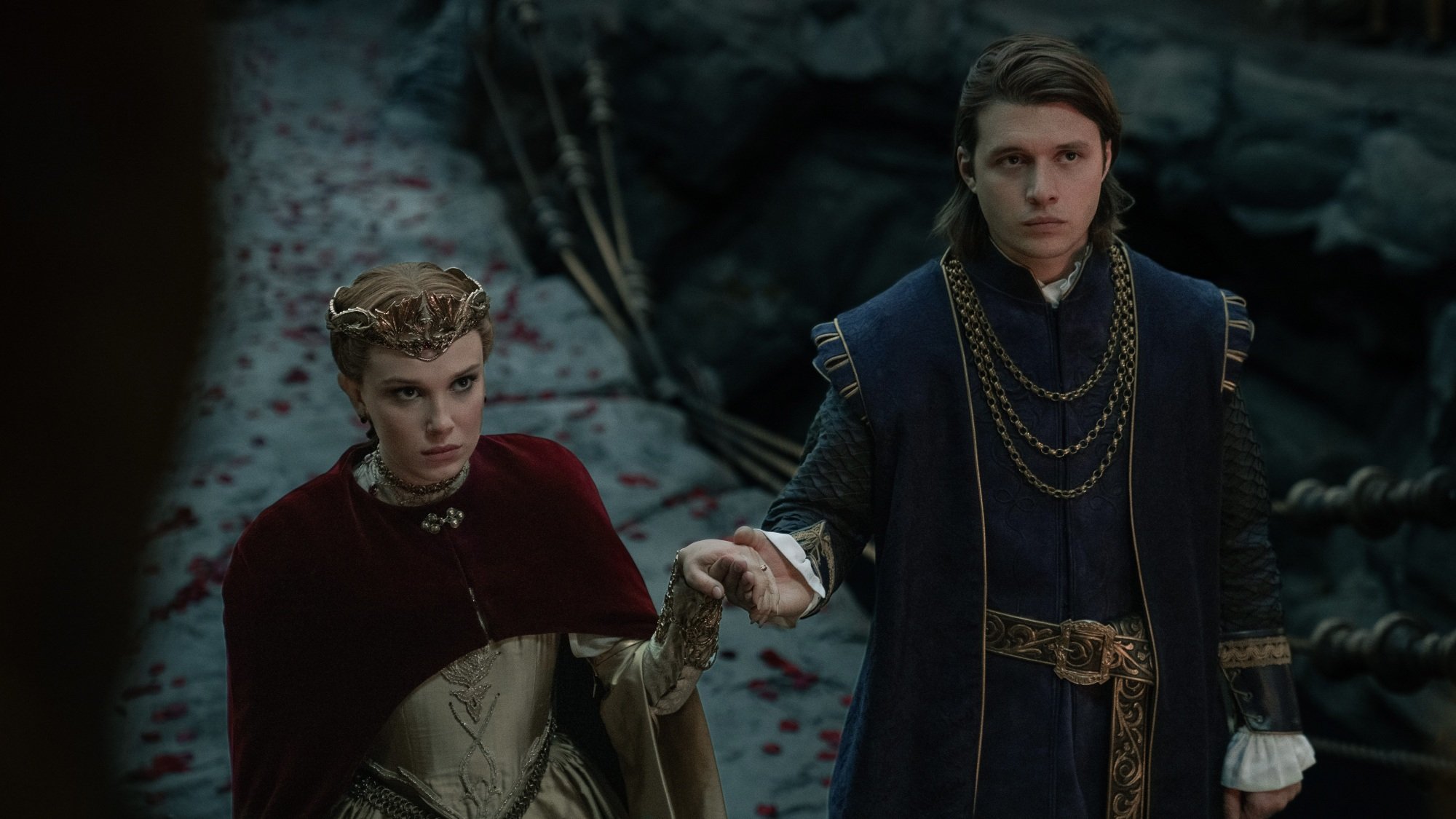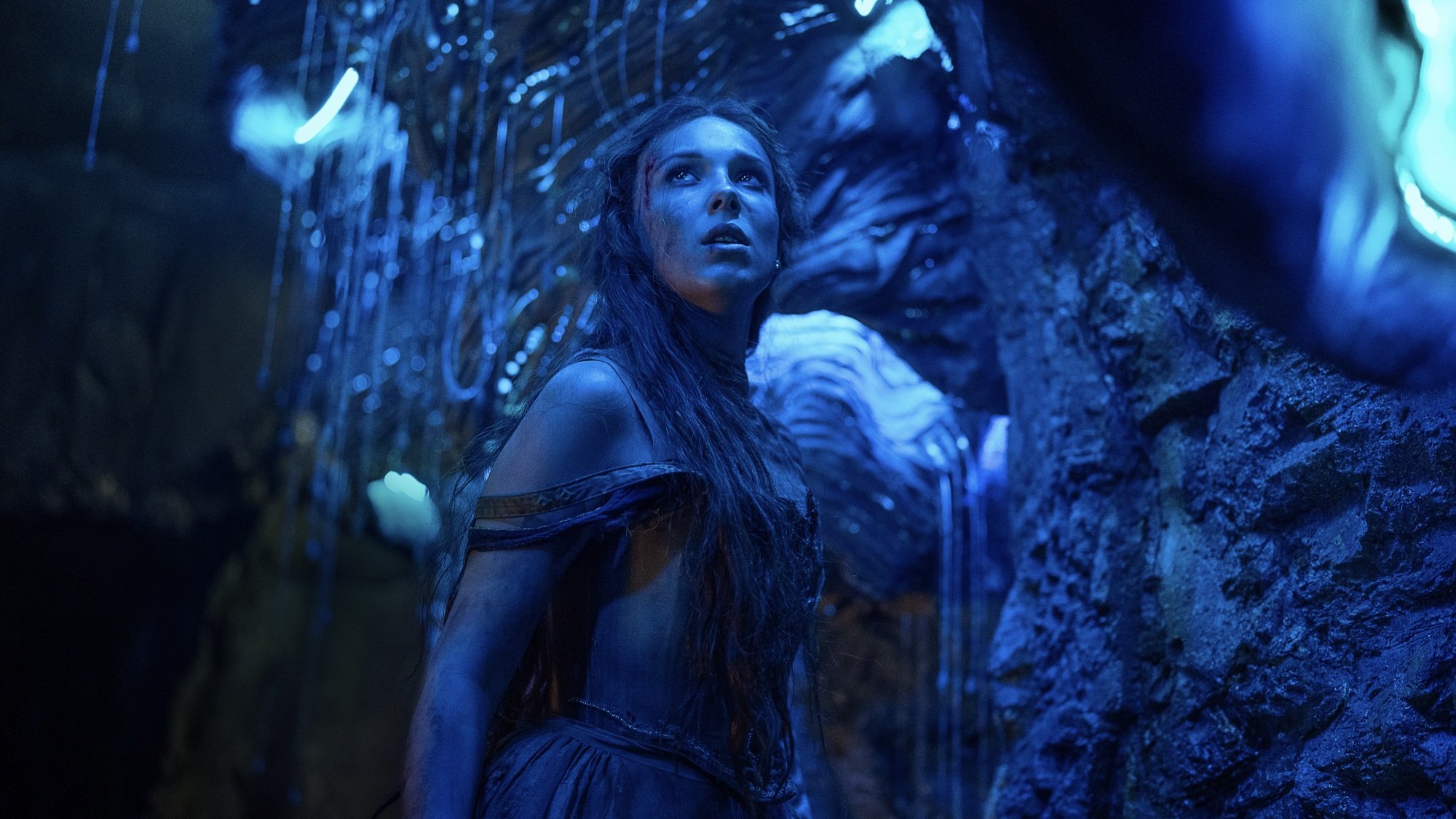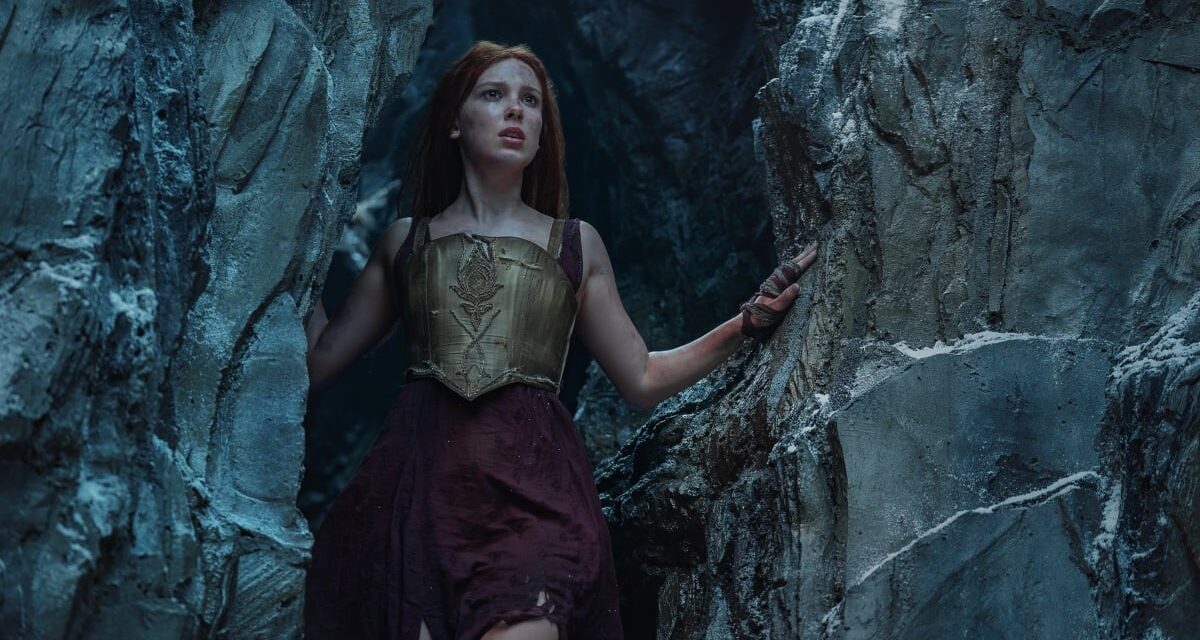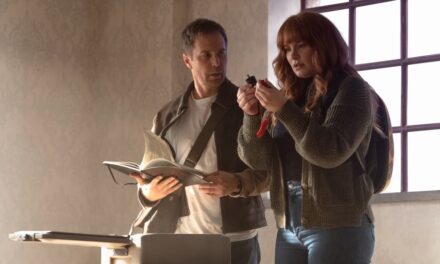Right from its opening moments, Damsel wants you to know it’s not like other fairy tales.
As Millie Bobby Brown’s Elodie tells us in voiceover, this film is not a story of a chivalrous prince saving a damsel in distress. Instead, we’ll learn that it’s a story of a brave young woman caught up in the schemes of a rotten royal family — and the hell she’ll go through to escape them. Boasting some inventive twists and a heartfelt lead performance from Brown, Damsel may not be groundbreaking fantasy, but it is a thrilling ride.
Damsel starts like a fairy tale — but quickly becomes a nightmare.

Millie Bobby Brown and Nick Robinson in “Damsel.”
Credit: John Wilson / Netflix
Damsel‘s first act plays out like a romantic fairy tale. Noblewoman Elodie accepts a marriage match that will bring prosperity to her starving people, putting duty over her own happiness. However, when she arrives in the island kingdom of Aurea, she finds that Prince Henry (Nick Robinson) is kind, handsome, and receptive to her worries. The two stroll through lush palace gardens, take a spontaneous horseback ride to the countryside, and discuss their joint hopes to travel the world. Perhaps this marriage won’t be as miserable as Elodie initially feared.
Yet even as Elodie and Henry bond, Damsel leaves a trail of breadcrumbs that something is terribly, terribly amiss. Ominous dragon statues line the harbor. Henry’s picture-perfect castle lies at the base of a towering mountain; its shadows engulf the castle at night in a fun case of visual foreshadowing. Perhaps worst of all is Henry’s mother Queen Isabelle’s (Robin Wright) cold treatment of Elodie’s kind stepmother, Lady Bayford (Angela Bassett). While Lady Bayford wants to get to know Henry’s family better, Isabelle claims this is just a marriage of necessity, and that the families won’t be connected further. Let’s just say the flags are redder than the robes of the mysterious red priestesses who prepare Elodie for marriage.
If the alarm bells were ringing softly before, they begin blaring when Henry takes Elodie to the top of the nearby mountain on a post-wedding trip. Why are the two greeted by nobles in gold masks? Why is Isabelle telling a story about a former king of Aurea sacrificing daughters to a local dragon? And — wait, why did Henry just throw his newlywed wife down a pit?
In a sickening turn of events, Damsel reveals that Elodie is the latest in a long line of young women ritually sacrificed to Aurea’s dragon (voiced by Shohreh Aghdashloo). But like the many women before her, Elodie is not about to die without a fight. She’ll have to muster every ounce of strength and wit if she is to make it out of the dragon’s lair. This is where the real fun of Damsel begins, delivering what feels like Ready or Not‘s deadly game of hide-and-seek mixed with Bilbo Baggins’s efforts to evade Smaug in The Hobbit.
Damsel is part clever survival thriller, part showcase for Millie Bobby Brown.

Millie Bobby Brown in “Damsel.”
Credit: John Wilson / Netflix
As Elodie gets her bearings in the dragon’s massive lair, Damsel guides us from cave to cave, building new rules for its heroine to follow. Previously sacrificed women have left clues as to how one can escape, along with writing their names on walls so the world can bear witness to their unjust deaths. Elsewhere, cavern features like crystals or glowworms prove to be useful tools. (The glowworms are useful to viewers as well, as they provide a break from stretches of murkily lit action.)
The film’s most inventive tools come courtesy of Elodie’s wedding outfit. Like Samara Weaving’s wedding gown in Ready or Not, Elodie’s dress is gradually torn to shreds over the course of the film — proof not just of her distress, but of her transformation into a hardened survivor. It’s also a handy asset. Fabric can bandage wounds, or serve as hand and foot wrappings for climbing. Ornamental jewelry also proves helpful in some unexpected ways. Watching each element of the outfit come into play is deeply satisfying, as are Elodie’s discoveries about the true history of Aurea and its dragon.
Of course, none of Damsel would work as well without Brown’s steadfast lead performance. Tasked with carrying much of the film alone, Brown throws herself into action heroine mode with gusto. Between wielding a sword, falling down chasms, and scrambling up walls, she delivers a physically committed performance that speaks volumes. She’s even able to sell most of the film’s clunkier dialogue, including irritating sequences where everyone feels the need to call their scene partners by name or title.
Since Brown is so much fun to watch by herself, it’s almost a shame when Damsel brings human intruders into the dragon’s lair. The film works best when it’s a two-hander between Brown and the often-unseen dragon, whose voice Aghdashloo imbues with menacing, seductive flair. Tension crackles between the hunter and her prey, especially when it seems like the dragon is simply playing with her food. By the time the damsel and the dragon have their final confrontation, it isn’t one of brute force; it’s between two characters who have carefully studied each other, and who have both learned that her adversary isn’t quite what she seemed.
Yes, Damsel isn’t like most other fairy tales. But with its blend of dark fantasy and themes of self-empowerment, it makes for a gripping story that’s great fun to experience.





